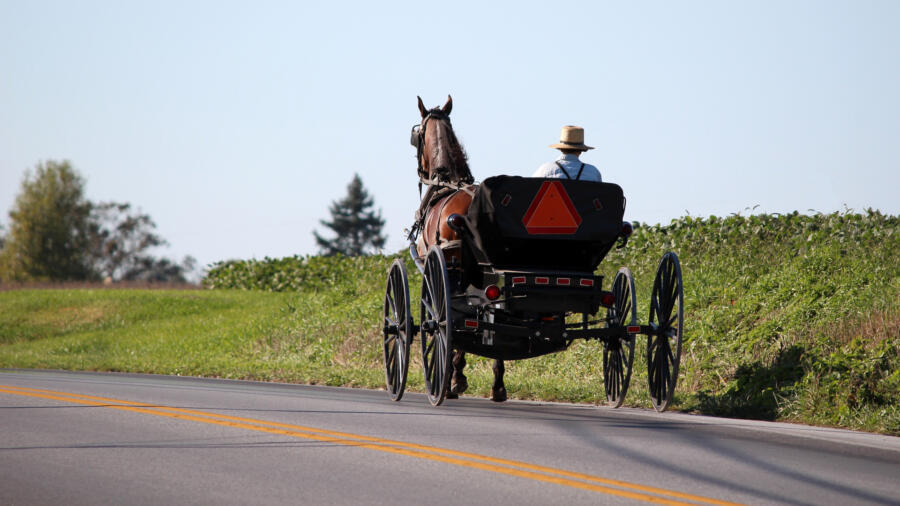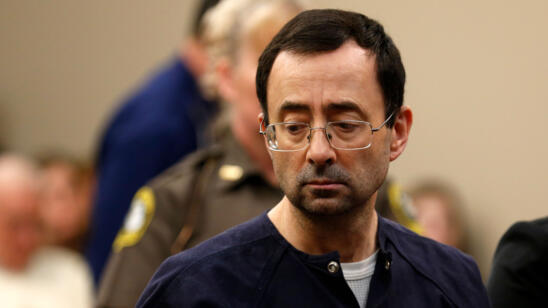Bedrooms, barns, even outhouses—nowhere was safe for Mary Byler, who from a young age, was raped by members of her Amish community, including her brothers: Johnny, David and Eli. In a secretly recorded confession, Johnny estimated he had sexually assaulted her hundreds of times.
Byler’s 2004 court case against her brothers, undertaken when she was 19, reflected a rare instance of Amish men being both brought to trial for rape and punished with jail time beyond community service and fines.
Byler’s brothers pleaded guilty. David got a four-year prison sentence, and Eli, who had a prior misdemeanor conviction, got eight years in prison. Johnny was ordered to spend nights at the county jail for one year, but was given work release and allowed to return to his community during the day.
The judge in the case, Michael Rosbrough, took note that the courtroom was packed with 150 tearful Amish supporters on sentencing day…for Johnny. He rhetorically asked: “How many of you have ever cried for Mary Byler?”
Child Sex Abuse Among the Amish in the News
There are several Amish enclaves across the United States, largely located in rural areas of Indiana, Kentucky, Michigan, New York, Ohio, Pennsylvania, Missouri and Wisconsin. Child sexual abuse within these communities has garnered more attention in recent years.
[Stream episodes of Accused: Guilty or Innocent? in the A&E App.]
Mainstream publications have investigated sex crimes against children amongst the plain communities (a term which encompasses Amish and various Mennonite communities), and there have been accounts from survivors in memoirs and documentaries and on podcasts like Mary Byler’s The Misfit Amish.
The Pittsburgh Post-Gazette published a series of in-depth articles on the subject. One 2019 story examined the role of Conservative Crisis Intervention (CCI), a group of plain representatives meant to serve as a liaison between the insular communities and law enforcement and Child Protective Services (CPS). Local officials seem hopeful about this partnership. But reporters Shelly Bradbury and Peter Smith spoke to former members of the communities who were concerned that CCI was taking reports of sexual abuse but never passing them on to CPS.
Newspapers across the U.S. and in the U.K. referenced reporting by Missouri’s Webster County Citizen on the 2020 trial of two Amish brothers. At 18 and 22, they pleaded guilty to a Class C felony for raping their sister when she was 12 and 13 years old. They served no prison time.
The prosecuting attorney Ben Berkstresser said he “offered a 15-year sentence” based on the fact that this was a situation where brothers were “engaged in acts with their sister” versus a parent sexually abusing their child. “And I made the decision not to send [the brothers] to the DOC, to suspend the sentences. These two young men would’ve been eaten alive in the state prison system.”
Their sentence was ultimately five years’ probation, completion of the Missouri Sex Offender Treatment Program (MOSOP), 100 hours of community service, $250 to the Law Enforcement Restitution Fund and a letter of apology to their Amish community. Berkstresser argued that while “there isn’t a question of what happened,” the boys were “immature for their age.”
The victim did not report the crime herself. It was investigated when a doctor discovered that the girl, also the victim of sexual abuse by two other brothers who were minors at the time of the rapes, was pregnant at 13. The doctor phoned a hotline.
Amish Child Sexual Abuse: A Crime Hidden From Outsiders
Over the course of a year, journalist Sarah McClure interviewed more than three dozen Amish community members (as well as law enforcement and other experts on Amish sexual abuse) for a collaborative feature between Type Investigations and Cosmopolitan.
“I’ve learned that sexual abuse in their communities is an open secret, spanning generations,” she wrote in the 2019 article. “Victims told me stories of inappropriate touching, groping, fondling, exposure to genitals, digital penetration, coerced oral sex, anal sex and rape—all at the hands of their own family members, neighbors and church leaders.”
McClure attributed prolific abuse to many factors, including the Amish being a patriarchal and isolated community that prefers to handle issues alone, without the involvement of law enforcement, and having “a religion that prioritizes repentance and forgiveness over actual punishment or rehabilitation.” (The act of forgiveness typically involves never speaking of an incident again.)
The Amish refer to outsiders as “English,” and the English know little about how the Amish church is structured, says Byler. “The church is structured like a caste system with a bishop, ministers and a deacon at the top of that system,” she says. Prominent families and wealthy businessmen occupy the next tier, followed by the middle class, then people who are “maybe not as well to do and at the very bottom is the poor.” This structure effects how abuse reports are handled internally.
Abuse within the plain communities is often underestimated by the English, say survivors. Many abuse survivors attribute this to the idyllic view the English have of the quaint plain community lifestyle, but survivors’ stories can also literally be lost in translation, Byler tells A&E True Crime.
“There can be a language barrier,” she says. “In our language we may not actually have words to describe private body parts—you might say ‘my stomach hurts’ because we have no words for ‘I have vaginal pain.'”
An Amish or Mennonite victim who does go outside of the community to report their assault to the police risks being ostracized from their world.
Misty Griffin, an assault survivor formerly of an Amish community and author of the memoir “Tears of the Silenced,” tells A&E True Crime that when her former Bishop was arrested, he admitted to starting to abuse girls when they were four or five years old, and he blamed the children.
“I read the report—he said, ‘We told them to keep their dresses down, and over and over, they wouldn’t keep their dresses down,'” says Griffin. “Little girls wearing dresses—they lift them over their head, they climb over the fences—you know, they’re little girls. You shouldn’t be attracted to them. It’s not their fault that you’re the way you are.”
Griffin’s family converted to being Amish. Her parents first practiced the lifestyle on their own; later Griffin moved to a Pennsylvania community. At first, the quiet, industrious life—helping a Bishop and his ill wife with their children—was a reprieve from a tumultuous, abusive childhood. But soon, Griffin was repeatedly sexually assaulted by her Bishop.
After he threatened to come to her room at night, she went to the police. She also told police that she suspected he was poisoning his wife and molesting his daughter; the latter belief stemmed from finding him in a compromising position with one child. (She later learned that he had been molesting that daughter since she was 4 years old. He had been caught, shunned for six weeks and then allowed to remain a Bishop. He continued to abuse his many children for years.)
What Is Being Done to Combat Child Sexual Abuse Among the Amish?
Because victims are so hesitant to come forward, Griffin hopes that someone else will step up for them. She recently launched the Childs Rights Petition, demanding that teachers at religious and home schools must be trained as mandatory reporters and that children receive some sexual abuse education. Griffin left the community shortly after making her report, but her sister remains there.
While many advocates and organizations are focused on helping abuse victims who have left the community, more modern communities and younger members of plain communities are seeking to help those who stay after experiencing abuse.
“There are Amish families who are standing up for their kids,” says Byler.
Related Features
Why Did ‘Amish Stud’ Eli Weaver Plot to Have His Wife Murdered?
The McMartin Preschool Case: Satanic Panic and Child Sexual Abuse Allegations
How Did USA Gymnastics Doctor Larry Nassar Get Away with So Much Sexual Abuse?


